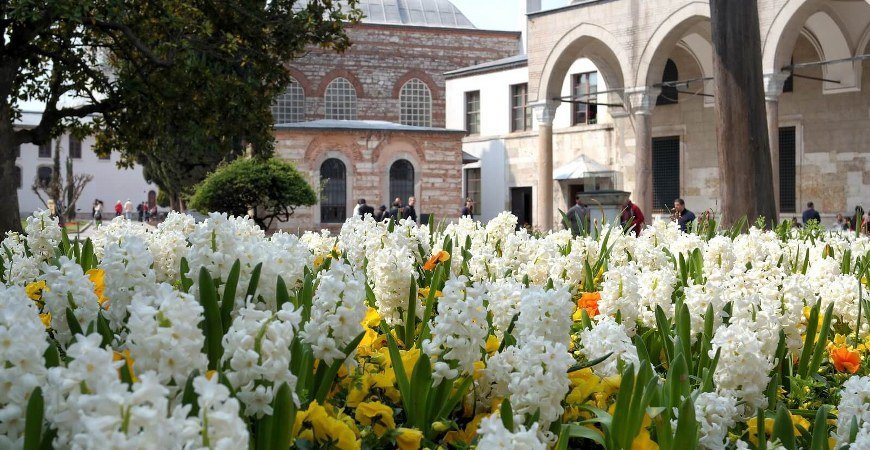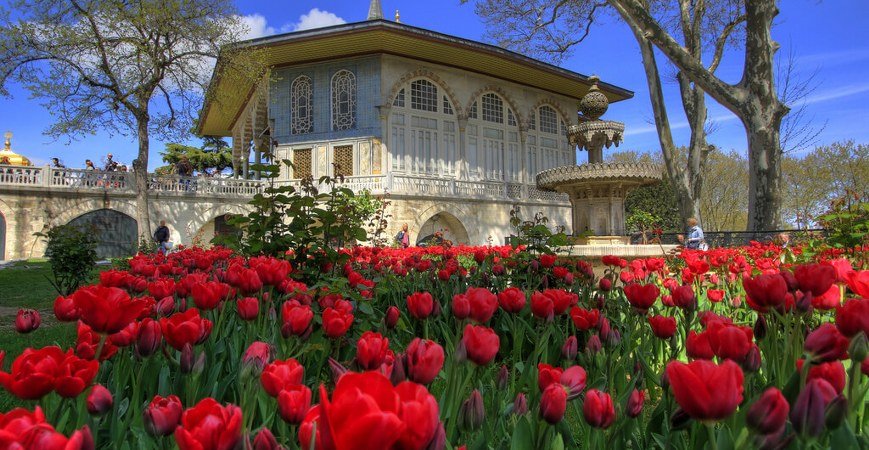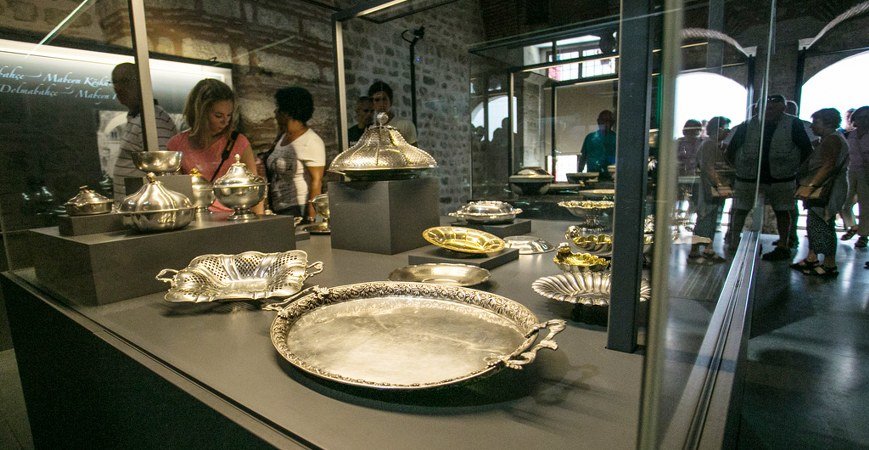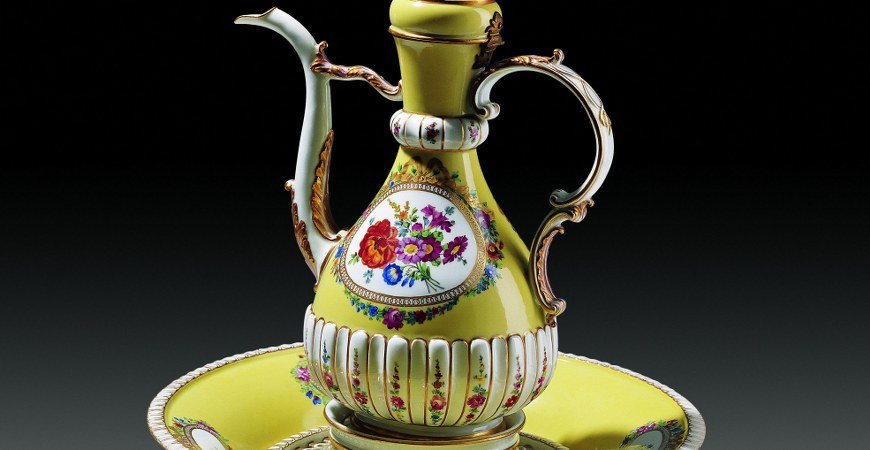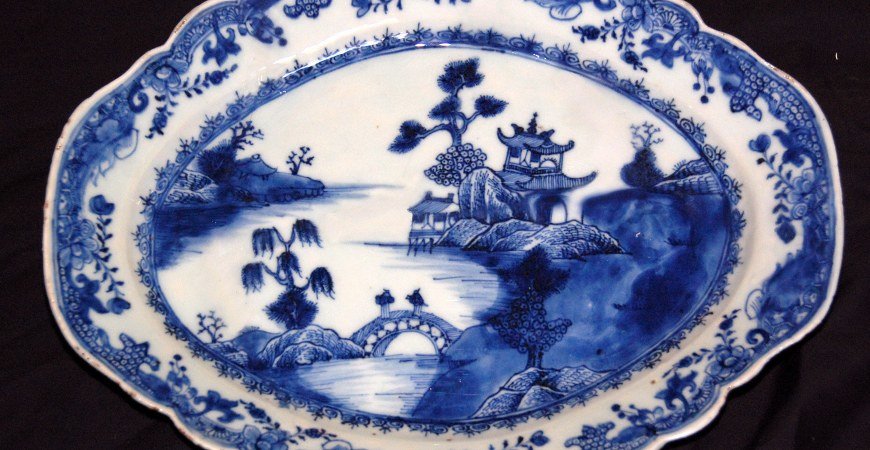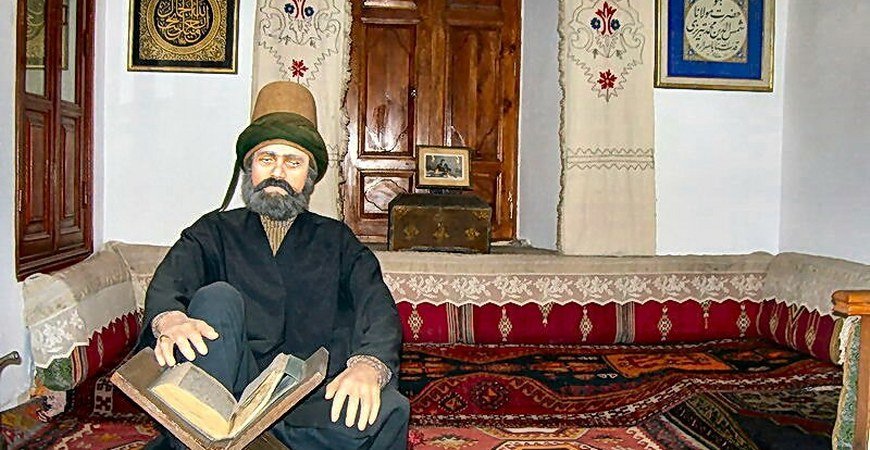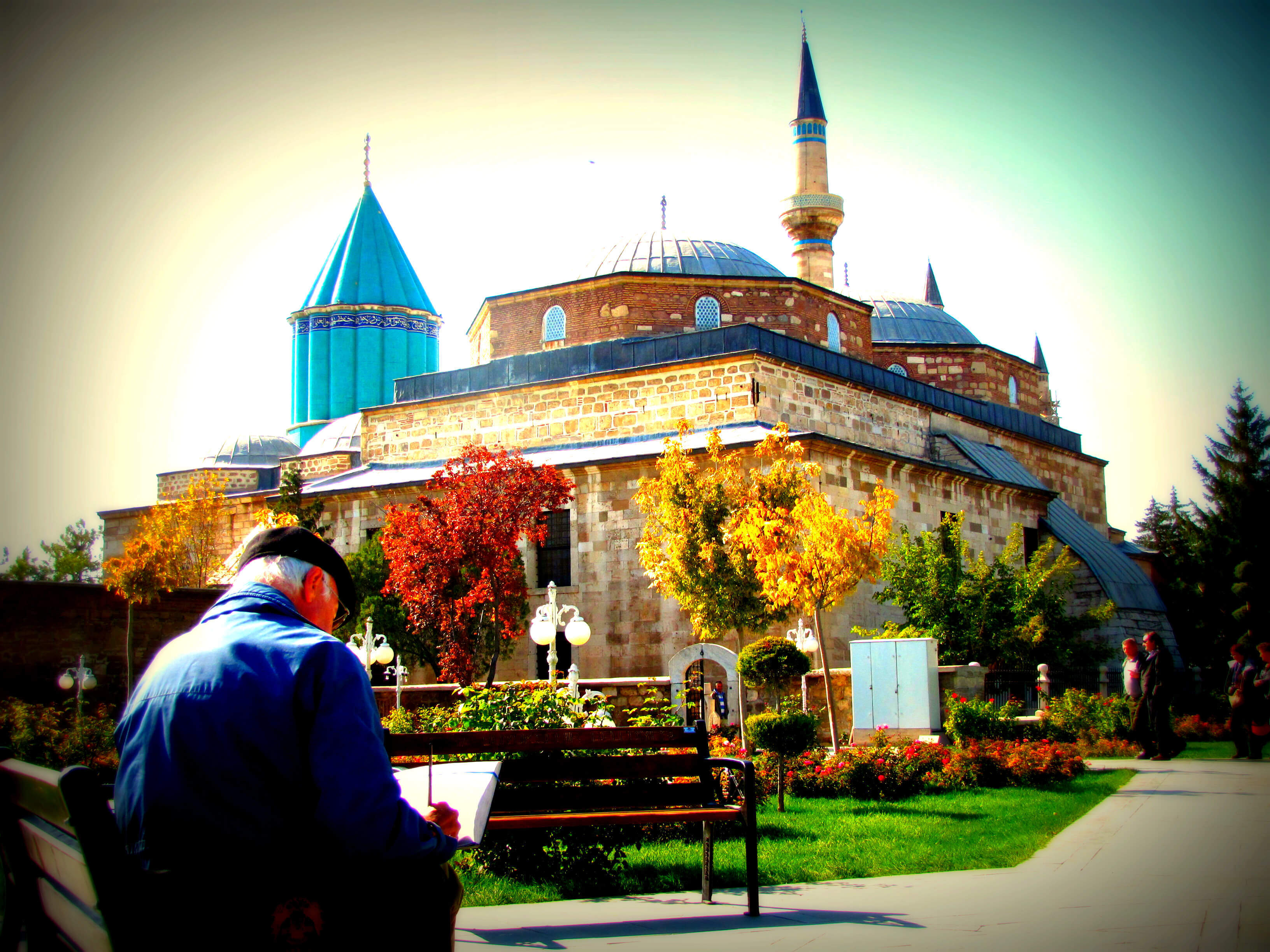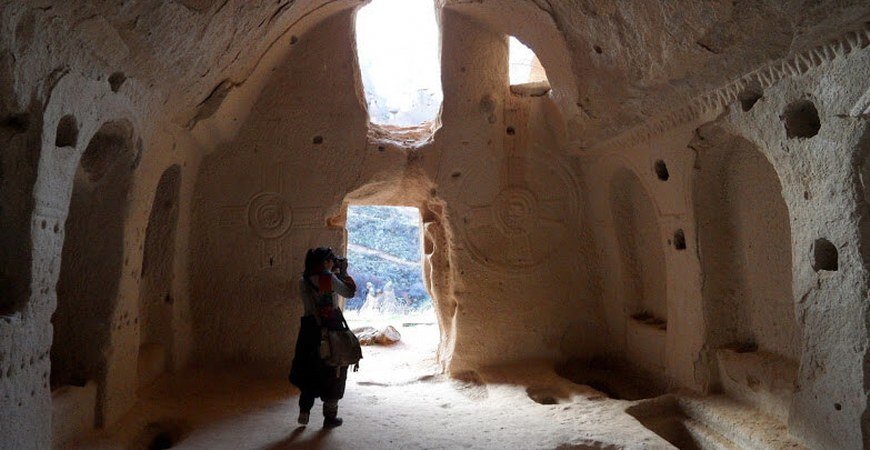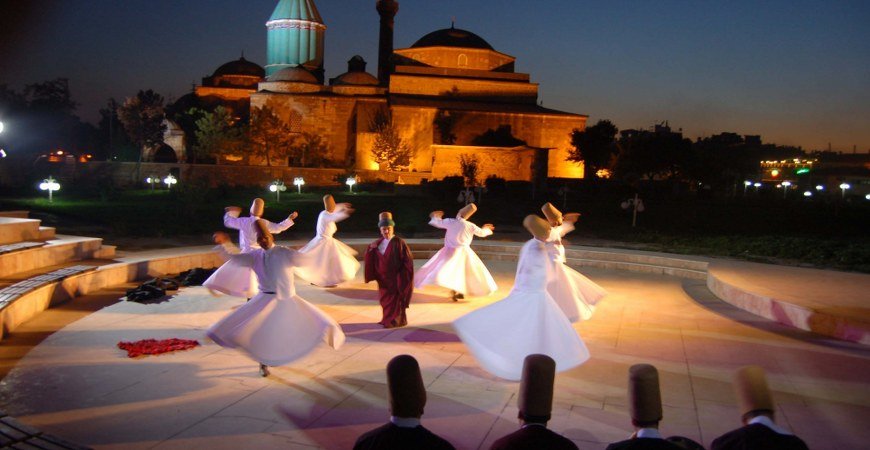The Flowered Shield Istanbul Topkapi Palace– Chapter 2,
More suited to a ceremonial parade than a warring army… A ‘shield as you know is a means of defense. Before the invention of the gun, it was held in the left hand as protection in hand to hand fighting from arrows and lances, stones and flames thrown from catapults, and sword thrusts. They were either round or four cornered. The best shield is both light and strong. For this reason, they were usually made of rhinoceros, elephant or crocodile skin, or if these were not obtainable, from ox skin. There were also shields made of fig or willow branches. So this shield in question was woven on top of a strong skin of this type embroidered with flowers and a fat steel knob placed in the center. On the inside is a handle for holding the shield. Shields with a knob in the center are called “domed shields”. Its purpose was to make blows slide off and so render them ineffective. This one, with its dried ‘willow branches, is both elastic and as strong as steel. The shield in Topkapi Palace embroidered with flowers in silk thread is said to have been used by Sultan Suleyman the Law Giver during his Mohac campaign. In the Mohac Campaign Register in Topkapi Palace archives, it lists the shields used by Sultan Suleyman’s army: 235 willow branch, 219 round steel, 2084 janissary and 1000 spiked shields, and besides these 637 habits shields made of fish skin. It also records in the Register that Suleyman’s army consisted of 200 thousand foot soldiers, 50 thousand cavalry, 500 canons, and 10 thousand chariots. From the records, it can more clearly be understood why the European historians call Sultan Suleyman the Law Giver the ‘Magnificent’. His army was equipped with the best and most modern weapons, was the most organized and disciplined army of any at that time. And it was led by a just, well informed and experienced statesman like Sultan Suleyman.
You will continue to find more details about The Flowered Shield Topkapi Palace in Istanbul – Chapter 3.
